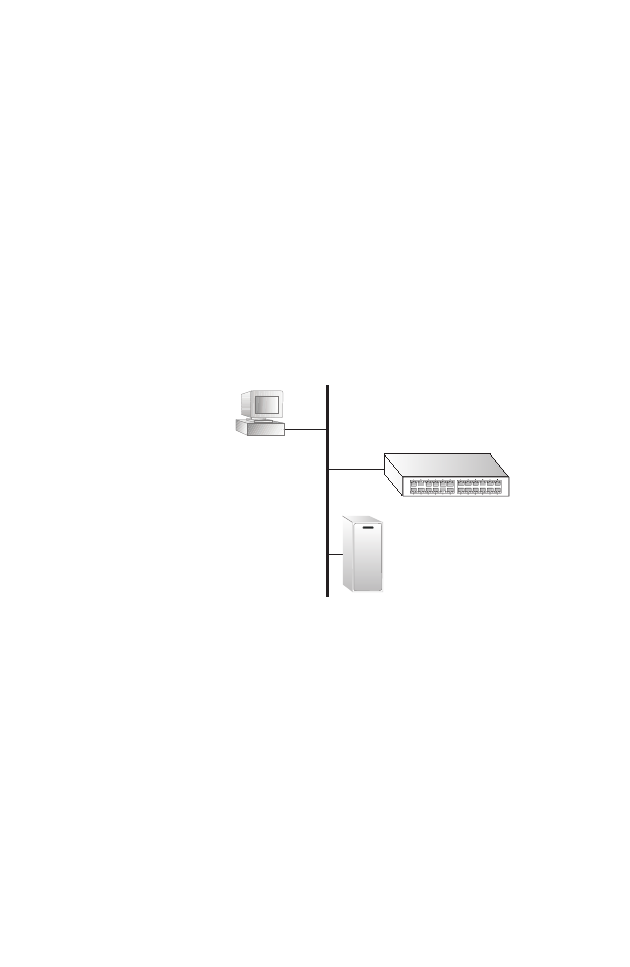
U
SER
A
UTHENTICATION
3-93
Configuring 802.1X Port Authentication
Network switches can provide open and easy access to network resources
by simply attaching a client PC. Although this automatic configuration and
access is a desirable feature, it also allows unauthorized personnel to easily
intrude and possibly gain access to sensitive network data.
The IEEE 802.1X (dot1x) standard defines a port-based access control
procedure that prevents unauthorized access to a network by requiring
users to first submit credentials for authentication. Access to all switch
ports in a network can be centrally controlled from a server, which means
that authorized users can use the same credentials for authentication from
any point within the network.
This switch uses
the Extensible
Authentication
Protocol over
LANs (EAPOL)
to exchange
authentication
protocol messages
with the client, and a
remote RADIUS authentication server to verify user identity and access
rights. When a client (i.e., Supplicant) connects to a switch port, the switch
(i.e., Authenticator) responds with an EAPOL identity request. The client
provides its identity (such as a user name) in an EAPOL response to the
switch, which it forwards to the RADIUS server. The RADIUS server
verifies the client identity and sends an access challenge back to the client.
The EAP packet from the RADIUS server contains not only the challenge,
but the authentication method to be used. The client can reject the
authentication method and request another, depending on the
configuration of the client software and the RADIUS server. The
authentication method must be MD5. (TLS, TTLS and PEAP will be
supported in future releases.) The client responds to the appropriate
method with its credentials, such as a password or certificate. The
802.1x
client
RADIUS
server
1. Client attempts to access a switch port.
2. Switch sends client an identity request.
3. Client sends back identity information.
4. Switch forwards this to authentication server.
5.Authentication server challenges client.
6. Client responds with proper credentials.
7.Authentication server approves access.
8. Switch grants client access to this port.


















